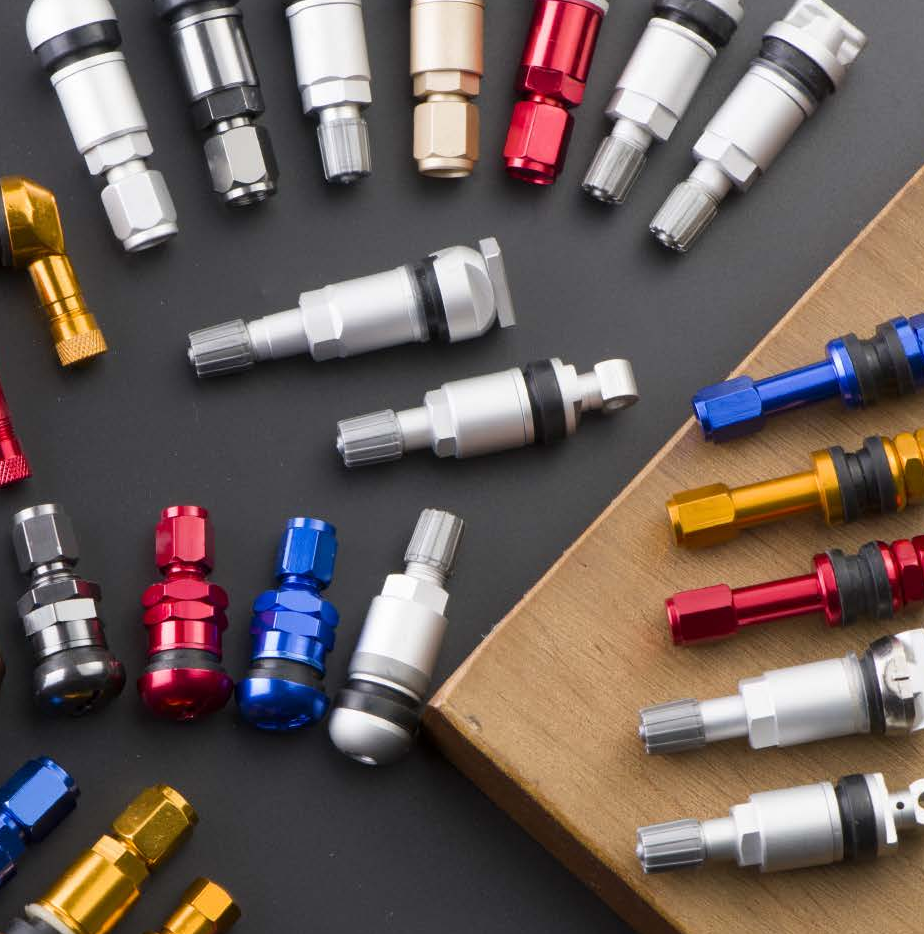WHAT ARE THE TIRE VALVE TYPES?
WHAT ARE THE TIRE VALVE TYPES?
While there are three basic types of tire valves: rubber snap-in, high-pressure snap-in and high-pressure metal clamp-in, it's the vehicle, required tire inflation pressures, driving conditions and wheel design that dictate which type of valve is appropriate for the application.
In order to complement wheel styling, valves can be fitted to the wheel in any position from horizontal to vertical. Nearly horizontal valve alignment is the most common and used by many wheel manufacturers to accept valve mounted tire pressure monitoring system transmitters. While tire valves will operate at any angle, valves mounted in a vertical axis used at high speeds are more likely to experience pressure loss due to centripetal forces depressing the valve core and allowing air to escape.
Tubeless Rubber Snap-In Valves
Tubeless rubber snap-in valves allow a maximum cold tire inflation pressure of 65 psi and are designed for passenger car, light-duty trailer and light truck applications, as well as are suitable for use in autocross competition. Rubber snap-in valves are available to fit either .453" or .625" diameter holes in the rim and have effective lengths ranging from 7/8" to 2-1/2". While most rubber snap-in valves use a plastic cap, some are fitted with chrome sleeves and metal caps to help complement the appearance of custom or alloy wheels.
Tubeless Snap-In Valves for High-Pressure
Tubeless snap-in valves for high-pressure applications are designed for medium and heavy-duty trucks and trailers and must be used when recommended cold tire inflation pressures exceed 65 psi. High-pressure snap-in valves for .453" rim holes allow a maximum cold inflation pressure of 80 psi while those for .625" rim holes allow a maximum cold inflation pressure of 100 psi. Typically used in steel wheels, high-pressure snap-in valves combine a thicker rubber snap-in base with a metal barrel and a plastic cap. Effective lengths range from about 1-1/4" to 2".
High-Pressure Metal Clamp-In Valves
High-pressure metal clamp-in valves can be used with virtually any wheel and are highly recommended for all track activities, as well as when vehicle speeds may exceed 130 mph. Metal clamp-in valves use a rubber grommet to seal against the wheel when their retaining nut is tightened. While metal clamp-in valve design and styling can result in retaining nuts hidden inside the wheel or visible outside, those with the retaining nut on the outside offer a practical benefit of allowing retaining nut tightness to be checked and adjusted without having to remove the tire from the wheel. Metal clamp-in valves allow a maximum operating pressure of 200 psi and are available to fit either .453" or .625" rim holes, as well as specialty applications, such as 6mm (.236") or 8mm (.315") holes. Metal clamp-in valves use a metal cap and have effective lengths ranging from flush to 2" and are offered in straight or bent configurations to fit wheels with unique shapes. Low profile and lightweight alloy clamp-in valves are also available for racing applications.



